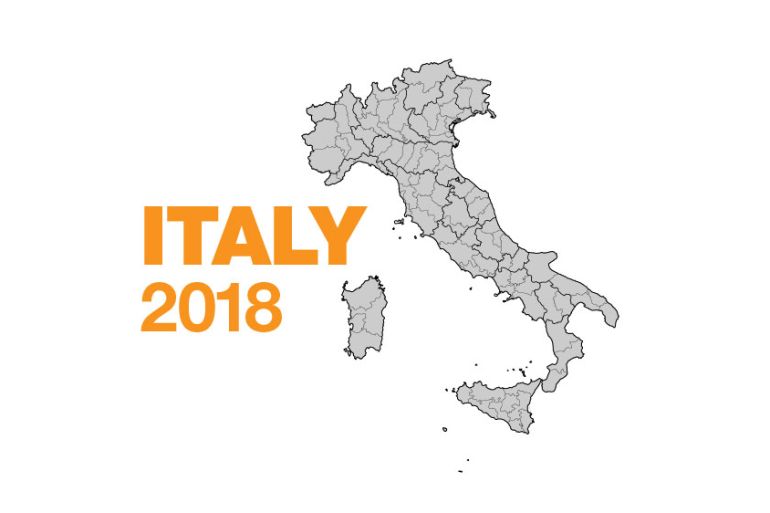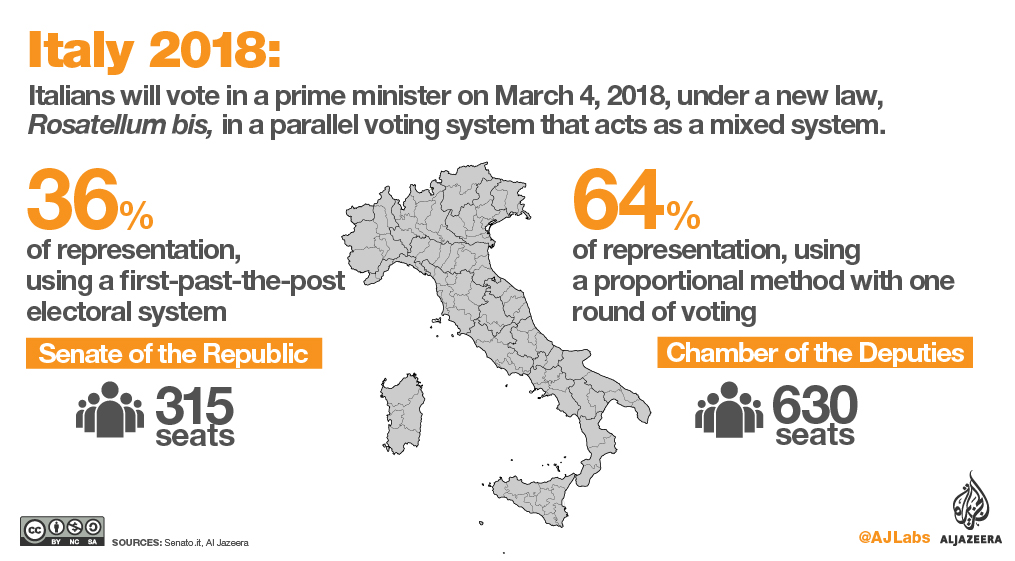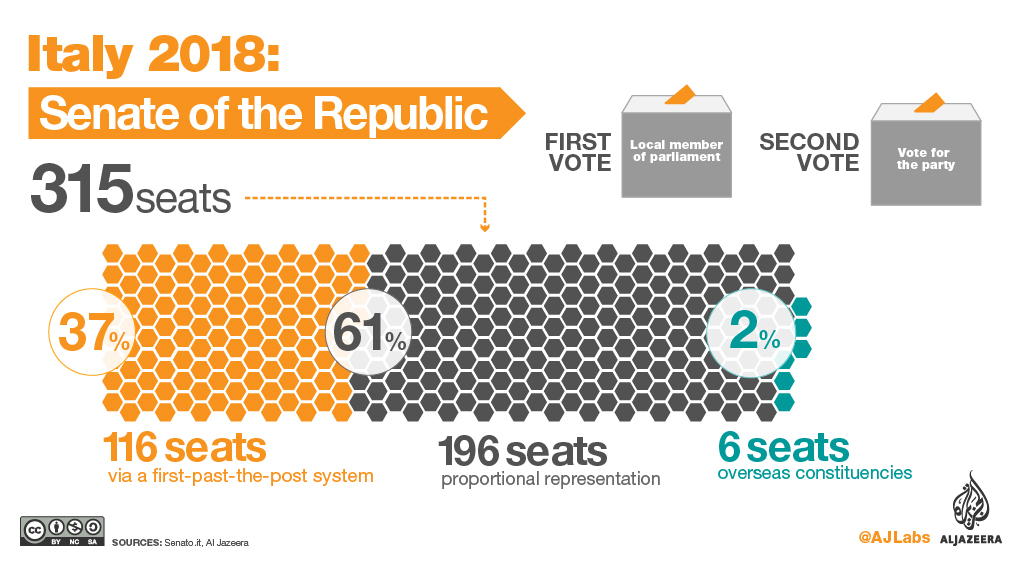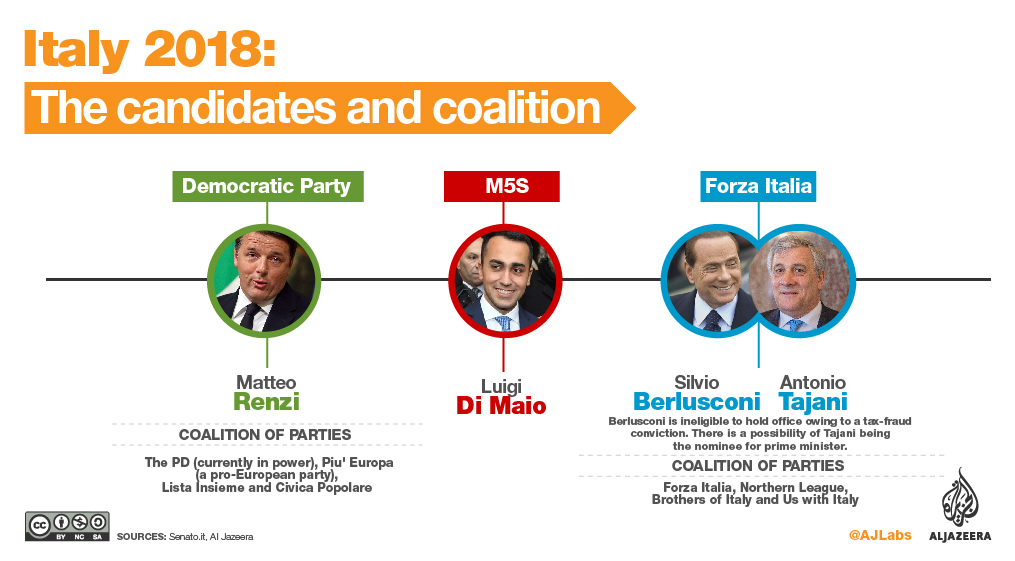Understanding Italian elections 2018
Breaking down the Italian electoral system

Published On 4 Mar 2018
Italy will go to vote on March 4, 2018, for a new parliament under a new law, Rosatellum bis, in a parallel voting system, which acts as a mixed system.

The Senate of the Republic has 315 elected members
- 116 Directly elected in single-member districts.
- 193 Regional proportional representation.
- 6 are elected by the Italians abroad.
- Senators-for-life includes former presidents of the Republic and several other persons appointed for life by a president of the Republic – no more than 5. The Senate is elected on a single ballot.

The Chamber of Deputies had 630 members
- 232 are directly elected in single-member districts.
- 386 are elected by national proportional representation.
- 12 are elected by the Italians abroad.
![Italian elections - lower house [Al Jazeera]](/wp-content/uploads/2018/03/cdb2358d00014588a6f7890436e36b05_6.jpeg)
Candidates
- Silvio Berlusconi – Forza Italia.
- Matteo Renzi – Democratic Party (PD)
- Luigi Di Maio – M5S
Silvio Berlusconi’s Forza Italia party is in alliance with the Northern League which is led by far-right politician Matteo Salvini other right-wing parties.
While Berlusconi is barred from running in the elections and cannot become prime minister, owing to a 2013 tax fraud conviction, his party was polling at an average of 36 percent as of the most recent polls.
Coalition
- Center-right coalition: Forza Italia, Northern League, Brothers of Italy and Us with Italy.
- Center-left coalition: The PD (currently in power), Piu’ Europa (More Europe, a pro-European party), Lista Insieme and Civica Popolare.
- Now, M5S, despite recent allegations of corruption, is even stronger. It’s likely to emerge from this election as the largest party. But it looks unlikely to secure enough of a majority to govern alone and it continues to refuse to form coalitions with other parties

Source: Al Jazeera